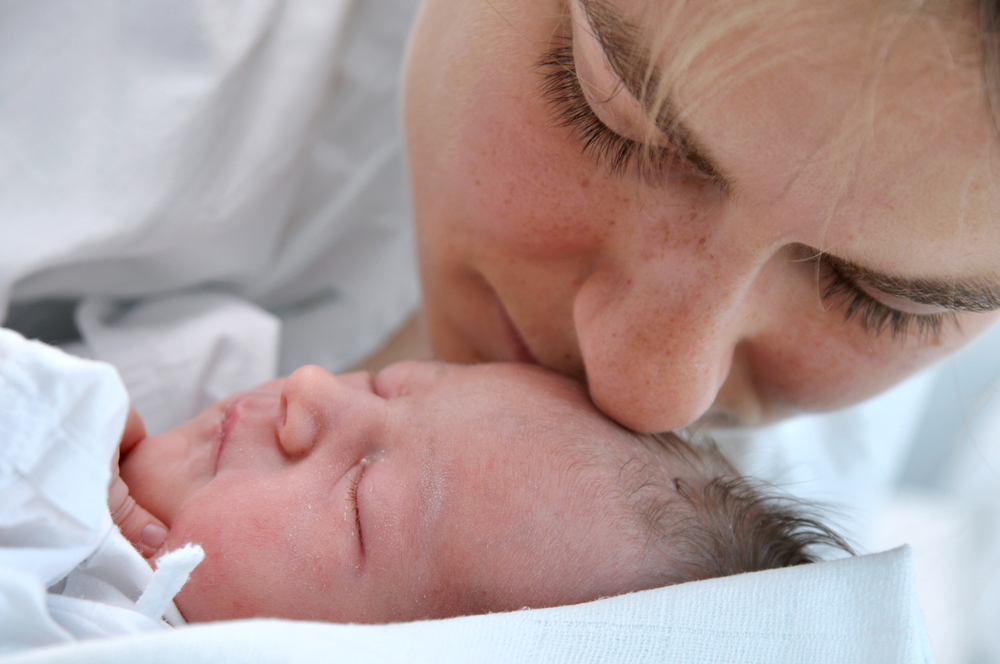According to news reports, Meghan Markle, Duchess of Sussex and wife to Britain’s Prince Harry, had planned a natural birth at Frogmore Cottage on the grounds of Windsor Castle. The decision must not have been easy; the duchess is 37 years old — considered a “geriatric maternity patient” with an increased risk of troublesome labour. She eventually had a normal delivery, but in a nearby hospital. The proud Duke of Sussex said the birth was “the most amazing experience he could ever possibly imagine”.
“There is no doubt that normal delivery (birth of a child through the vagina of mother) is always the best method,” says Dr Sanjib Mukhopadhyay, a consultant gynaecologist based in Calcutta. In fact, it is the way all mammals give birth. “It is much more comforting for a patient in the post-delivery period. The length of hospital stay is less. And the bonding between mother and child is much better,” he adds.
During a normal delivery, the skin and tissues around the vagina can stretch and tear as the baby moves through the birth canal. If the tearing is severe, the mother may need stitches. Extreme stretching could weaken pelvic muscles that control urine and bowel function, making the mother prone to urine leakage. This can, however, be cured by regularly doing Kegel exercises to strengthen pelvic floor muscles.
Says Dr Samir Roy, a Calcutta-based consultant gynaecologist, “A normal delivery means the mother can avoid major surgery, which is associated with risks or after-effects such as severe post-delivery bleeding, infections, severe reaction to anaesthesia as well as long-lasting pain.” In a normal delivery, no pain is experienced post birth. A mother can hold her baby and breast-feed soon after delivery. “The mother can be released from hospital within 24 to 72 hours. She can go back to her routine work very soon,” he adds. If your first pregnancy leads to a normal birth, you can avoid complications in future pregnancies.
According to many doctors, a Caesarean section is necessary only in certain cases — when a woman has such a long labour that it endangers the baby or if the baby does not get enough oxygen. Older mothers — especially over 35 — are at higher risk of complications such as excessive bleeding, prolonged labour lasting more than 20 hours and, ultimately, infant death. The risk is even higher if she has hypertension or diabetes, if the baby is too big for the birth canal or if it is a breach baby (placed upside down in the womb).
C-section is the only option if the mother has an infection that can be passed on to the baby during normal birth (HIV or genital herpes) or has problems with the placenta. “A C-section is a life-saving method of delivery and it should not be abused for non-medical reasons,” says Roy.
The World Health Organisation (WHO) has published new guidelines on non-clinical interventions designed to reduce unnecessary C-sections. The key recommendations include educational interviews, use of clinical guidelines, requirement for second opinion for C-section and intervention aimed at health organisations such as collaborating with midwives. According to Dr Ana Pilar Betran, medical officer, department of reproductive health and research, WHO, it is crucial that women who need C-sections are able to access them. It is equally important that unnecessary procedures be avoided, ensuring the lives and well-being of women and their babies.
Normal deliveries are becoming rare, especially in West Bengal. “It is not a question of preference. Every one would love normal delivery,” says Dr Mukhopadhyay. “But the prevalent mindset at times decide a particular type of clinical management. Absence and non-adherence to clinical protocol is another reason.”
The rising incidence of C-section is a global phenomenon, despite Markle’s choice. But every nursing home and hospital should have trained midwives for women who want a normal delivery.
WHO on normal delivery
- Labour and childbirth should be individualised and woman-centred
- No intervention should be implemented without a clear medical indication
- Only interventions that serve an immediate purpose and proven to be beneficial should be promoted
- A clear objective that a positive childbirth experience for the woman, the newborn and her family should be at the forefront of labour and childbirth care at all times










